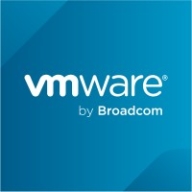

Azure Cost Management and VMware Tanzu CloudHealth are major contenders in cloud cost management. Azure seems to have an edge in terms of integration and cost-saving features, while VMware leads in trend analysis and forecast optimization.
Features: Azure Cost Management offers real-time consumption viewing, extensive customization, and seamless integration with various cloud services. VMware Tanzu CloudHealth provides comprehensive trend analysis, budgetary management, and granular data handling, enabling better forecasting and optimization.
Room for Improvement: Azure Cost Management could improve automation, reporting, and integration with other cloud providers. VMware Tanzu CloudHealth needs enhanced support for SaaS applications, deeper analytics, and better mobile access.
Ease of Deployment and Customer Service: Azure Cost Management supports a wide range of cloud environments including public, private, hybrid, and on-premises, with noted user-friendly documentation and technical support. VMware Tanzu CloudHealth primarily targets public cloud environments and includes comprehensive support but lacks broader deployment flexibility.
Pricing and ROI: Azure Cost Management is generally free within the Azure ecosystem, offering significant ROI through cost visibility and reduced infrastructure maintenance. VMware Tanzu CloudHealth may seem costly with its competitive pricing suitable for larger enterprises but requires an initial investment higher than Azure's free structure.
| Product | Market Share (%) |
|---|---|
| Azure Cost Management | 6.0% |
| VMWare Tanzu CloudHealth | 5.2% |
| Other | 88.8% |


| Company Size | Count |
|---|---|
| Small Business | 11 |
| Midsize Enterprise | 6 |
| Large Enterprise | 32 |
| Company Size | Count |
|---|---|
| Small Business | 4 |
| Midsize Enterprise | 2 |
| Large Enterprise | 4 |
Azure Cost Management provides actionable insights for IT professionals to optimize cloud expenses and align budgets with strategic goals. It features real-time visibility and analytics for efficient resource management.
Azure Cost Management offers a comprehensive suite of tools for cost analysis and control, including budgeting alerts and integration capabilities to optimize resource spending. Its intuitive interface simplifies navigation while providing trend analysis, forecasting, and cost-saving recommendations. By delivering detailed insights into resource usage, Azure helps organizations manage expenses effectively, enabling strategic financial planning through clear visualizations and reports.
What are the key features of Azure Cost Management?Azure Cost Management is widely implemented in industries seeking to monitor and control budgets, optimize costs, and track resource spending. Companies utilize it to gain billing insights, understand usage patterns, and minimize cloud expenses. It is instrumental in managing infrastructure costs and supporting cost management strategies across different deployments, making it valuable for projecting profitability and setting cost alerts.
VMware Tanzu CloudHealth, formerly known as VMware Aria Cost Powered by CloudHealth, is a specialized cloud management platform tailored for Multi-Cloud Cost Optimization. It offers comprehensive visibility into cloud spending across various providers, enabling users to identify areas for optimization and make informed resource allocation decisions. With features like reserved instance management, resource rightsizing, and automated cost governance policies, it facilitates financial management for optimal cost efficiency. Beyond cost optimization, Tanzu CloudHealth enhances cloud operations through workload optimization and governance automation, catering to multi-cloud environments encompassing public, private, and hybrid clouds. Its primary focus remains on enabling organizations to effectively manage and reduce cloud expenditures while supporting operations across diverse cloud platforms.
We monitor all Cloud Cost Management reviews to prevent fraudulent reviews and keep review quality high. We do not post reviews by company employees or direct competitors. We validate each review for authenticity via cross-reference with LinkedIn, and personal follow-up with the reviewer when necessary.